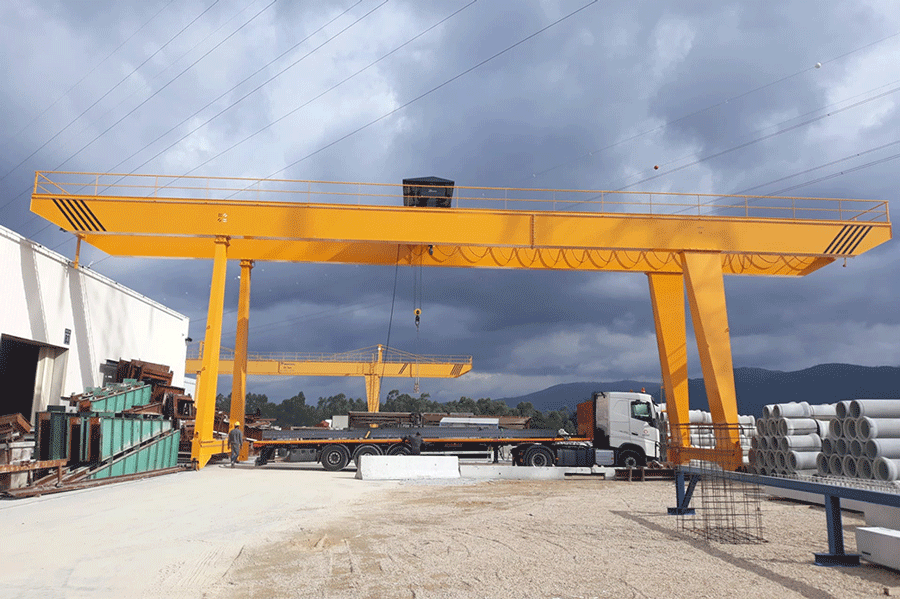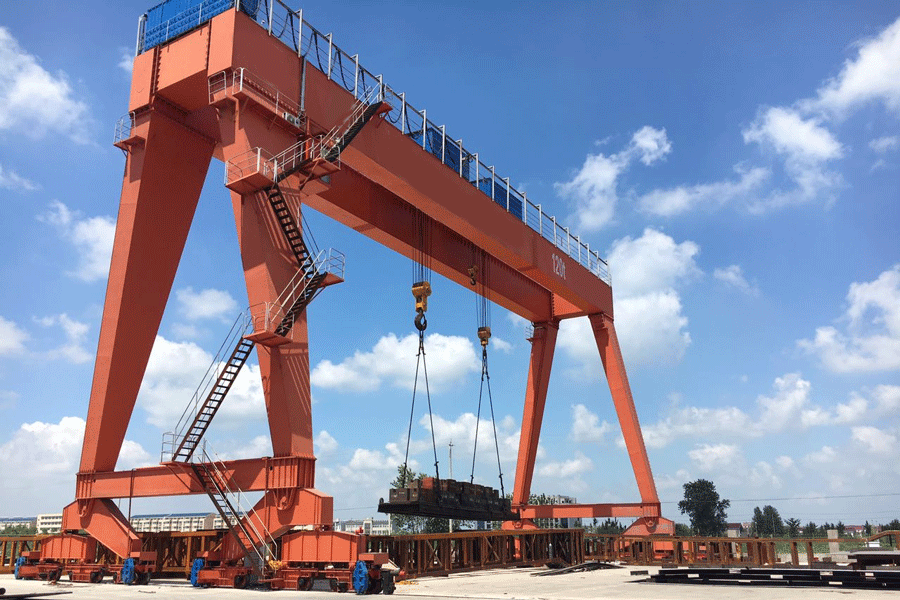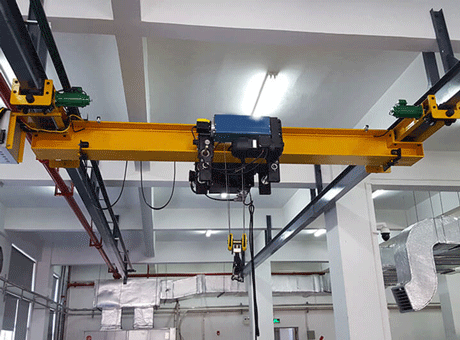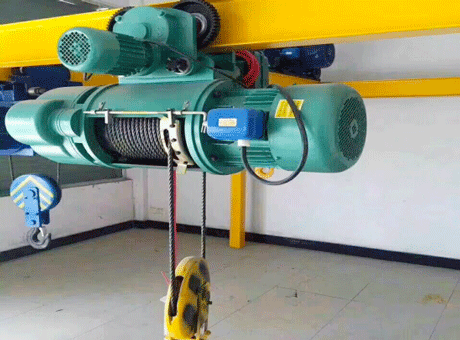Safety requirements for preparation before work
1. Only drivers with certificates can operate the crane independently. Non-drivers are not allowed to enter the cab.
2. Carry out the handover work carefully. The handover person should introduce the situation to the successor, and the successor should read the handover diary and inspect the crane.
3. Wear labor protection equipment correctly. Do not drink alcohol before going to work. Lifting work is prohibited after drinking.
4. Check the brakes, hooks, wire ropes and safety devices of the портален кран. If abnormal performance is found, they should be eliminated before operation.
5. Check the area around the cart and trolley and the track to make sure there is no one around and no obstacles before turning on the main power supply. The power supply voltage should be above 330 volts.
6. Before closing the main power supply, all control handles should be placed in the zero position.
7. Conduct no-load operation experiments on the crane. Each limit switch, emergency switch, and brake should be sensitive and reliable.

Safety requirements at work
1. The driver should concentrate on operation, pay close attention to the surrounding situation, and should not do anything unrelated to work.
2. The driver should not operate under any of the following circumstances:
(1) Overloading or unclear object weight. Such as lifting buried objects whose weight or tension is unclear, and diagonal lifting.
(2) Defects or damage to the structure or parts that affect safe work, such as brake and safety device failure, hook nut anti-loosening device damage, wire rope damage reaching scrap standards, etc.
(3) Bundling, hanging is not strong or unbalanced and may slide, and there is no padding between the edges and corners of the heavy object and the wire rope.
(4) There are people or floating objects on the hoisted object.
(5) The working area is dark and it is impossible to clearly see the area, the situation of the hoisted objects, and the command signals.
3. Use even force when turning or pushing the handwheel or handle of the controller, and change gears step by step.
4. Limit switches, emergency switches and reverse parking are not allowed during normal operation.
5. Do not adjust the brake of the lifting mechanism under load.
6. Before driving and lifting or lowering objects, you must sound the alarm. When approaching people during operation, an intermittent ringing alarm should also be given.
7. When lifting, the lift must not pass over people and important equipment.
8. When the hook is raised or lowered, the wire rope should be located in the drum and pulley rope groove. When the hook is lowered to the lowest position, the wire rope on the drum must be kept for more than 3 turns.
9. The operation should be carried out according to the command signal. The emergency stop signal, no matter who sends it, should be executed immediately.
10. When the hoisted weight is close to or reaches the rated lifting capacity, the brakes should be checked before lifting, and the hoisting should be carried out stably after a small height and short stroke test.
11. When the crane is in operation, if parts are damaged or other malfunctions occur, the crane should be lowered, the main power supply should be turned off, and the leader should be reported to organize maintenance. Do not perform maintenance during operation.
12. When the crane encounters a sudden power outage while the crane is running, all controller handles should be returned to the zero position. When there are objects hanging on the hook, fences and instructions should be made in the dangerous area under the heavy objects to prohibit people from passing under the hanging objects.
13. It is strictly forbidden for the driver to operate the crane and collide with the same-span crane. The distance between cranes on the same track should not be less than 1 meter.
13. It is strictly forbidden for the driver to operate the crane and collide with the same-span crane. The distance between cranes on the same track should not be less than 1 meter.
14. When two cranes work together to lift the same object, the wire rope should be kept vertical, and the lifting and operation of each crane should be synchronized. The load borne by each crane should not exceed its respective rated lifting capacity. If the above requirements are not met, the rated lifting capacity should be reduced to 80%, and the engineer should be present to provide guidance during lifting.
15. In places where cranes operate on two levels, when the upper-level crane is working, the horizontal distance between the lower-level crane and it shall not be less than 1 meter. When the hook of the upper crane does not rise to the extreme position, the lower crane is not allowed to pass or drive underneath it. When the upper-level crane drops the hook, it must get in touch with the lower-level crane, and it can only drop the hook after receiving a response signal.
16. Cranes operating in the open air on rails should generally stop working and anchor the crane when the wind force is greater than Level 6.

Safety requirements at the end of work
1. Raise the hook to a higher position, drive the trolley to the proximal beam away from the trolley’s slide line, and raise the trolley to the parking position of the crane.
2. The retrieval device is an electromagnetic disk and a grab bucket, which should be lowered to the ground.
3. Turn all controllers to the zero position and pull down the protective cabinet switch.
4. For cranes working in the open air, secure the carts and trolleys securely to prevent accidents caused by wind.
5. All problems, faults, repairs and handling of the crane found during operation and inspection shall be recorded in the handover book.
6. Handle handover procedures according to the shift handover system. The crane works in a single shift, or when the replacement driver does not arrive, the operation situation must be reported to the team leader. Only after approval can the crane leave the crane and get off work.





















